-
Flames change the sound of a firefighters' personal safety alarm
The PASS, short for Personal Alert Safety System, has been used by firefighters for thirty years to help track members of their team who might be injured and need assistance to escape a fire. Though the alarm has saved many lives, there are cases in which the device is working correctly but is not heard or not recognized.
-
-
Wildfires in west, southwest forcing hundreds from their homes
The arrival of summer has typically been accompanied by an increase in the number and intensity of wild fires in the U.S. southwest, and this year is no exception.
-
-
Mitigating fires in the wildland-urban interface
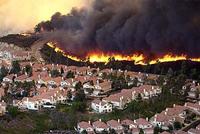
More than forty-six million residential structures in about 70,000 communities in the United States are located in the so-called wildland-urban interface (WUI). On average, WUI fires destroy 3,000 buildings annually. They accounted for six of the ten most costly fires in the United States over the last 100 years. Five of these fires occurred in California, where the incidence of wildfires currently is up 47 percent this year over last.
-
-
Relying on natural gas-fired generators during electric grid failures
Natural gas-fired electricity generators can provide energy security at domestic military installations in the event of electric grid failures. A study found there is minimal risk of interrupted deliveries for a moderate outage (two weeks to three months).
-
-
Crowdfunding disaster relief gaining in popularity
A new way to raise funds for disaster victims is gaining in popularity. It is called crowdfunding. The majority of crowdfunding Web sites take a 3 percent to 8 percent cut of the money that is raised — far less than the 25 percent cut most large charities take.
-
-
Firefighters, FAA weighing the use of drones for wildfires
With the wildfire season already claiming land and homes in the Western United States, federal government firefighters are considering the use of drones outfitted with cameras to map out the size and speed of a wildfire.
-
-
As wildfires increase, scientists call for more study of terrestrial, atmospheric effects
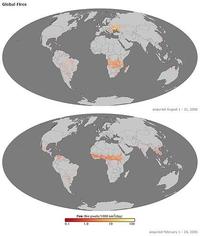
Wildfire is a disturbance of ecosystems, and concerns continue to grow about the terrestrial and atmospheric effects of wildfires. Wildfires are expected to increase 50 percent across the United States under a changing climate, over 100 percent in areas of the West by 2050 as projected by some studies.
-
-
A majority on Earth will soon face severe, self-inflicted water shortage: scientists

A conference of 500 leading water scientists from around the world, held last week in Bonn, issued a stark warning that, without major reforms, “in the short span of one or two generations, the majority of the nine billion people on Earth will be living under the handicap of severe pressure on fresh water, an absolutely essential natural resource for which there is no substitute. This handicap will be self-inflicted and is, we believe, entirely avoidable.”
-
-
New technologies help in tornado prediction
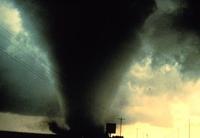
Scientists are working to increase tornado warning times. A new method, known as “warn-on forecasts,” will issue warnings based on forecasts rather than on observations. These warnings could increase the warning time to one -to-six hours before a tornado touches down. Another methodology being developed would give meteorologists the ability to tell people how strong the tornado will be before it hits the ground.
-
-
Understanding slow earthquakes helps in earthquake prediction
Earthquakes that last minutes rather than seconds are a relatively recent discovery, according to an international team of seismologists. Researchers have been aware of these slow earthquakes only for the past five to ten years because of new tools and new observations, but these tools may explain the triggering of some normal earthquakes and could help in earthquake prediction.
-
-
GPS technology offers 3-minute tsunami alerts
Researchers show that by using global positioning systems (GPS) to measure ground deformation caused by a large underwater earthquake, they can provide accurate warning of the resulting tsunami in just a few minutes after the earthquake onset.
-
-
The contribution of geophysics to disaster planning
Earthquakes, tsunamis, and other natural disasters often showcase the worst in human suffering — especially when those disasters strike populations which live in rapidly growing communities in the developing world with poorly enforced or non-existent building codes. Geophysicists can help by identifying natural hazards, and by developing effective disaster risk reduction strategies which integrate many different experts.
-
-
Tornadoes rip through North Texas, killing six
As many as ten tornadoes ran through north Texas Wednesday night killing six people and leaving another seven missing. These were among the most severe storms to hit the United States this year. The National Weather Service said wind speed reached 200mph.
-
-
Asteroid 1998 QE2, nine times larger than cruise ship, to glide past earth
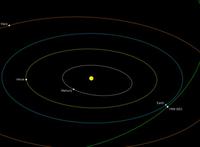
Two weeks from now, on 31May 2013, asteroid 1998 QE2 will sail serenely past Earth, getting no closer than about 3.6 million miles, or about fifteen times the distance between Earth and the moon. While QE2 is not of much interest to those astronomers and scientists on the lookout for hazardous asteroids, other asteroids are. NASA recently announced developing a first-ever mission to identify, capture, and relocate an asteroid for human exploration.
-
-
California community sinking into the ground, and engineers are baffled
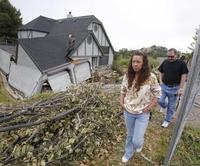
Several homeowners in the community of Lake County, California are faced with a problem: their houses are sinking into the ground and they do not know why. The situation has been deteriorating steadily, and now mail delivery has been cancelled in the area, and city and county crews have been forced to change the subdivision’s sewage line to an overland pipe as a result of manhole collapses.
-
More headlines
The long view
Using Drone Swarms to Fight Forest Fires
Forest fires are becoming increasingly catastrophic across the world, accelerated by climate change. Researchers are using multiple swarms of drones to tackle natural disasters like forest fires.
How Climate Change Will Affect Conflict and U.S. Military Operations
“People talk about climate change as a threat multiplier,” said Karen Sudkamp, an associate director of the Infrastructure, Immigration, and Security Operations Program within the RAND Homeland Security Research Division. “But at what point do we need to start talking about the threat multiplier actually becoming a significant threat all its own?”
